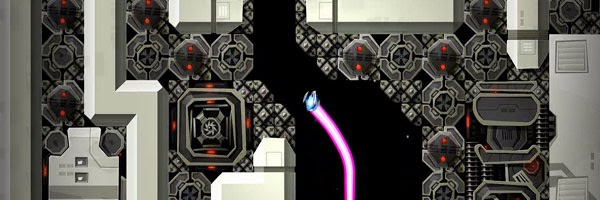We are
massive Castlevania fans at Retro 101 so any release of a game, even an HD
overhaul of a portable title is going to get us excited. We quite liked the 3DS
version so ventured forth with some intrigue to see if this port holds up as
well.
For those
unfamiliar with the original, this is not a Metroidvania style Castlevania
game. You do explore a castle but it’s in a much more linear fashion than the
previous games on the DS and GBA. If you want that style of Castlevania there
are currently seven games you can choose from to scratch that itch and looking
back, if we’re honest about it, few of them are as perfect as Symphony of the
Night.
Instead,
Mirror of Fate takes us back to the style of the original games and is much
closer to something like Dracula X or Super Castlevania IV. This is a bold
move, but from our point of view we are delighted someone has taken a chance
and tried to mix things up a bit. Bouncing around rooms is all well and good
but sometimes you want to smack something in the face and swing around a bit,
and this is something that Mirror of Fate offers up in abundance.
This was an utterly stunning
looking game on the 3DS but the transition to the big screen hasn’t quite gone
as well. Character models and animations seem a bit stilted at times and brutality
seems to have lost some of its impact. The graphic novels tyle cut scenes seem
somewhat odd in their new setting and losing the amazing 3D graphics is also a blow
that the visuals never fully recover from.
The visuals are boosted by some
stunning use of music and sound. Almost all the cut scenes are voice acted and
the gruth Scottish accents mix with the forbidding visuals to create an
imposingly bleak fairy tale. The grandeur and impact of the music is also of
the highest standard. he strong sound is more effective on the big screen and
the dramatic orchestral scores add a more serious and sinister tone to the world.
The
graphics and sound create a much more serious and hard edged tone – much like
Castlevania: Lord of Shadow. This game looks and sounds brutal and every second
of it feels like an epic and bleak life or death struggle. This is something we
really like as it adds gravity and an almost Dark Souls like edge to the
atmosphere.
Of course
all the window dressing in the world can’t make up for a bad game. Mirror of
Fate is much more combat orientated than other games in the series and the
developers have taken care to instigate a robust and flexible system to fight
off Dracula’s hordes. The developers said they were looking to take influence
from Street Fighter for their system and it shows. There are numerous combos,
dodges, blocks and launchers which can be unlocked as you progress. This allows players some flexibility in how
they fight. Admittedly limited, special powers and sub weapons are also on hand
to help you through.
Once you
get to grips with the system you’ll soon be despatching monsters with relative
ease, and the system is more fluid than seen in previous Castelvania games that
follow the hack and slash route. Combat is the emphasis of the game and you
will often find yourself locked into arenas or needing to kill monster to
progress around the castle. Players used to being able to duck and dodge their
way through the metroidvania style games may well get a rude awakening here.
Boss
fights are one aspect that lets the game down a little. They simply feel
somewhat less inspired than before and often begin to become repetitive, a
shame as this could have been addressed from the 3DS version. They can also be
fairly merciless which is offset by the fact the game saves what seems like
every two minutes. Indeed, the game even saves at checkpoints within boss
fights - which may seem stupid until you actually come up against one of the
tougher ones. At that point you’ll be glad of them as it stops players hitting
bricks walls in their progression. Also, using quick time events really isn’t a
good idea.
During
your adventure you will play as three different characters but aside from small
changes (such as Alucard being able to breath under water without a timer),
there is little to distinguish them. In one way this is good as it means any
unlocked moves remain throughout, but it would have been nice to see some
variation in combat techniques and a more varied way of tackling the castle.
Collectibles are also fairly standard with scrolls that expand on the games
lore and chests which raise magic and health just about all you are going to
find.
Negatives
aside this is a bold and risky direction to take the franchise in and in the
most part it’s successful. Ok, so the castle isn’t really there to be explored
and there isn’t much point in searching out every last corner, but the more
combat heavy approach is implemented well and the graphics and sound are
incredible. It’s easy to forget that Dawn of Sorrow was merely solid and Order
of Ecclesia took half the game to come to life. The Castlevania franchise
needed to be shaken up and we are more than happy with the direction.
Overall,
this is a game that will likely divide Castlevania fans. It’s still that a dark
and forbidding fairy tale told that worked so well on the 3DS. It doesn’t quite
fit as well here but it does manage to create some of the same atmospheric,
dark and brutal adventure and if more people get a chance to experience it then that
can only be a good thing. Its home is clearly on the 3DS though.
7/10














